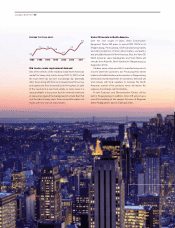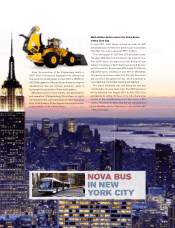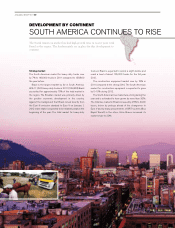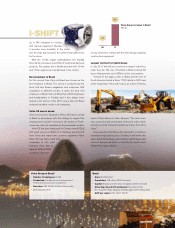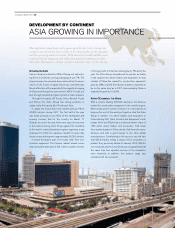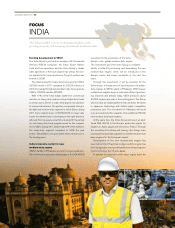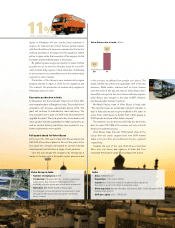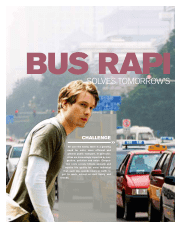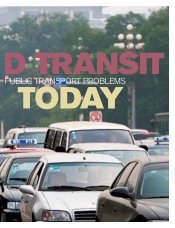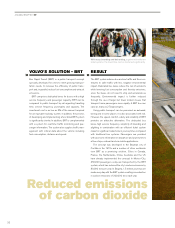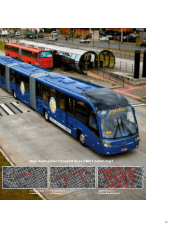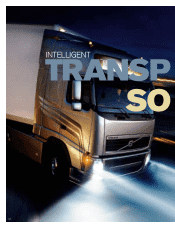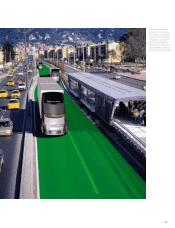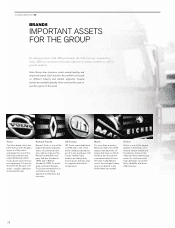Volvo 2011 Annual Report Download - page 32
Download and view the complete annual report
Please find page 32 of the 2011 Volvo annual report below. You can navigate through the pages in the report by either clicking on the pages listed below, or by using the keyword search tool below to find specific information within the annual report.
OVERALL CHALLENGES
FUTURE TRANSPORT NEEDS
In 2012, the Volvo Group celebrates 85 years. In 1927, the first series-produced Volvo car rolled
off the production line at the Gothenburg plant. For 85 years, Volvo has developed pioneering
products and services.
Much has happened since 1927. Volvo has developed from
a small local industry to one of the world’s largest manufac-
turers of trucks, buses and construction equipment with
more than 100,000 employees, production facilities in 20
countries and sales in more than 190 countries.
It is crucial to keep pace in a rapidly changing world.
Today, it is more important than ever to understand the
operating environment, how it impacts the Volvo Group
and, first and foremost, to act on these changes to meet
future transport needs. The next pages define some of
the more significant challenges and the actions being
undertaken by the Volvo Group to meet these challenges.
1 Population growth, urbanization
and megacities
The population of the earth is ever increasing. In 2050,
the population is expected to exceed nine billion. Since
2008, more than half the world’s population live in cities
and in fifty years that figure is expected to have risen to
two-thirds. The most intensive pace of urbanization is
ongoing in Africa and Asia. In addition, the number of
megacities and megaregions with populations exceeding
ten million is growing rapidly. Approximately 20% of the
world’s population is expected to live in cities with popula-
tions in excess of two million inhabitants by 2015.
This trend is leading to an increased need for transpor-
tation. Large quantities of goods, products and people are
transported daily within as well as to and from cities. Cities,
particularly major cities, have particular requirements for
town and traffic planning. Furthermore, traffic jams as well
as pollution and noise need to be addressed through
specially adapted vehicles for urban environments.
2Climate change, oil resources
and alternative fuels
Climate change comprises one of the most complex and
difficult questions of our time. Fossil fuel is the single
largest source of greenhouse-gas emissions, which are
deemed responsible for climate changes.
For a long time, oil was considered a
reliable source of energy but today oil
use is a highly contested issue. This is
primarily attributable to the environ-
mental problems associated with oil
but also since future access to oil is
uncertain due to dwindling oil reserves
and instability in the oil producing regions.
It is no longer a question of whether we
have to convert to a fossil-free society; it is now
a question of how this will be achieved and at what
pace it will be performed. Major efforts have been
made to develop the use of alternative, renewable-energy
sources. However, the development of alternative fuels
differs widely in different regions depending on the natural
resources available, which, in turn, entails a challenge in
the form of developing vehicles adapted for various dif-
fering types of fuel. The move towards large-scale use of
renewable fuel is also dependent on political decisions to
create the necessary infrastructure.
THE
PRE
AND SHAPE
Challenges
1 Population growth, urbanization and megacities
2 Climate change, oil resources and alternative fuels
3 Shortage of natural resources and raw material
4 Safety and security
5 Competent labor
A GLOBAL GROUP 2011
TO
28


